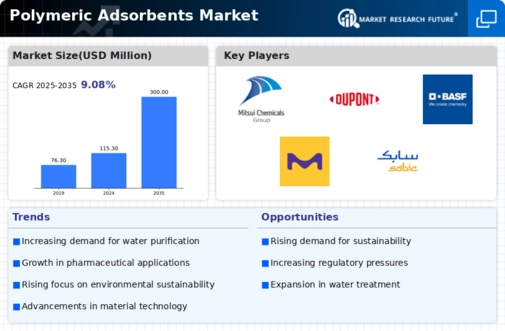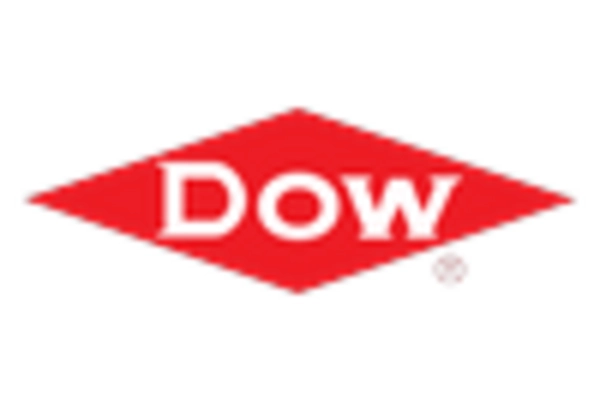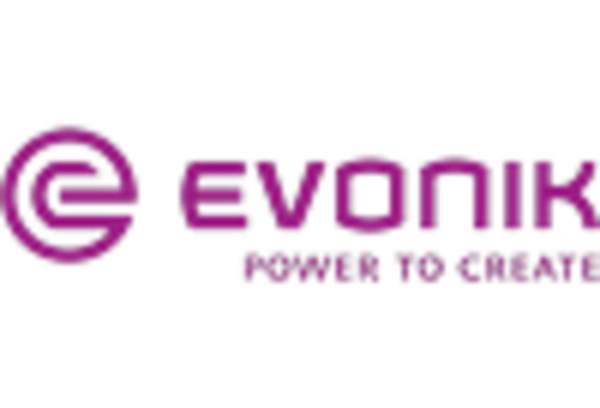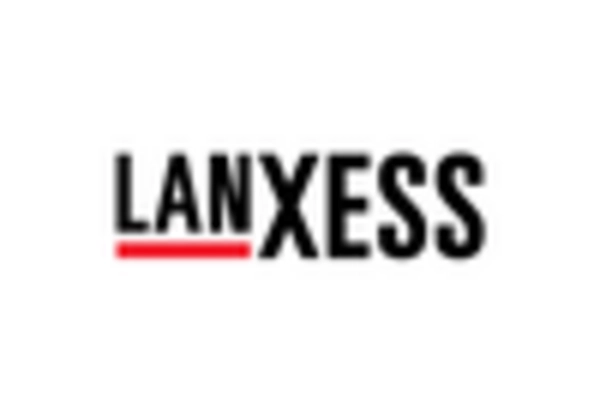Growth in Food and Beverage Sector
The food and beverage industry is experiencing a notable expansion, which is positively impacting the Polymeric Adsorbents Market. As consumer preferences shift towards healthier and safer food options, manufacturers are increasingly utilizing polymeric adsorbents for food processing and preservation. These materials are effective in removing undesirable flavors, colors, and contaminants, thus enhancing product quality. The food and beverage sector is projected to grow at a rate of approximately 5% annually, which may lead to a heightened demand for polymeric adsorbents. This trend indicates a promising future for the Polymeric Adsorbents Market as it aligns with the evolving needs of food safety and quality assurance.
Increasing Environmental Regulations
The rise in environmental regulations is significantly influencing the Polymeric Adsorbents Market. Governments and regulatory bodies are implementing stringent guidelines to control pollution and promote sustainable practices. This regulatory landscape is compelling industries to adopt advanced materials, such as polymeric adsorbents, to comply with environmental standards. The market is likely to see a surge in demand as companies seek effective solutions for waste management and pollution control. With the potential for a market growth rate of approximately 6% in response to these regulations, the Polymeric Adsorbents Market is poised to expand as businesses prioritize compliance and sustainability.
Expansion of Pharmaceutical Applications
The pharmaceutical sector's expansion is contributing to the growth of the Polymeric Adsorbents Market. With the increasing complexity of drug formulations and the need for high-purity products, polymeric adsorbents are becoming essential in the purification and separation processes. The market for pharmaceutical adsorbents is expected to witness a robust growth trajectory, with estimates indicating a potential increase of around 6% annually. This trend underscores the importance of polymeric adsorbents in ensuring the quality and efficacy of pharmaceutical products, thereby solidifying their position within the Polymeric Adsorbents Market.
Rising Demand for Water Treatment Solutions
The increasing need for effective water treatment solutions is a primary driver for the Polymeric Adsorbents Market. As water scarcity and pollution concerns escalate, industries are seeking advanced materials to purify water. Polymeric adsorbents are recognized for their efficiency in removing contaminants, including heavy metals and organic pollutants. The market for water treatment is projected to grow significantly, with estimates suggesting a compound annual growth rate of over 7% in the coming years. This growth is likely to propel the demand for polymeric adsorbents, as they offer a sustainable and effective solution for water purification, thereby enhancing their role in the Polymeric Adsorbents Market.
Technological Innovations in Adsorption Processes
Technological advancements in adsorption processes are driving the evolution of the Polymeric Adsorbents Market. Innovations such as the development of high-capacity and selective polymeric adsorbents are enhancing the efficiency of various applications, including environmental remediation and industrial processes. These advancements are likely to improve the performance of polymeric adsorbents, making them more attractive to end-users. The market is expected to benefit from these innovations, with a projected growth rate of around 5% in the coming years. This suggests that the integration of new technologies will play a crucial role in shaping the future landscape of the Polymeric Adsorbents Market.


















Leave a Comment